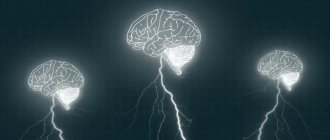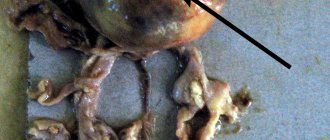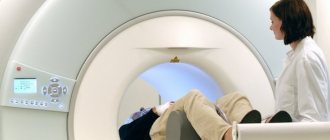Blood and vessels, Nicotine
Smoking tobacco has a particularly negative effect on the heart and blood vessels. The prevalence of addiction is one of the reasons for the high mortality rate from vascular and heart diseases. Nicotine disrupts hematopoietic processes and changes the rheological characteristics of blood. In the article, the reader will learn about how nicotine affects the blood and blood vessels.
How does blood composition change when smoking?
Nicotine negatively affects blood composition. In a smoker, hematocrit increases, the content of red blood cells, leukocytes, platelets and hemoglobin changes. The resulting changes in the blood increase the risk of developing cardiovascular pathologies.
Change in hemoglobin level
The role of hemoglobin is the delivery of oxygen to the cells and tissues of the body. As a result of smoking, the content of this protein in the blood increases slightly. This is explained by the fact that the body is trying to compensate for the developing oxygen starvation.
In the blood of smokers, approximately 5% of all hemoglobin is converted to carboxyhemoglobin. This chemical compound appears as a result of the reaction of hemoglobin with carbon monoxide. It cannot attach oxygen.
Despite the fact that hemoglobin levels are increased, the body continues to experience hypoxia. This negatively affects the functioning of all vital organs. Due to oxygen starvation, metabolism changes. The risk of blood clots, heart attack and stroke, increases significantly.
Effect on red blood cells
Chronic smoking affects red blood cell levels. For a smoker, this figure increases by about 12%. Nicotine also significantly increases the level of so-called deformed red blood cells.
Against the background of such changes, the indicator of blood plasticity increases. The tissues experience a lack of oxygen, despite the fact that the number of red blood cells is significantly higher than normal.
Due to erythrocytosis, the volume of circulating blood increases and its viscosity increases. The patient may develop headaches and his blood pressure increases significantly. The consequences of such changes are damage to the blood vessels of the legs and the development of obliterating endarteritis, heart attack or stroke.
In a smoker, the rate of red blood cells increases.
Change in red blood cell count
Nicotine increases the number of white blood cells. On average, their indicators increase by 10–11%. An increase in the level of these formed elements leads to leukocytosis.
A detailed study of leukocytes shows damage to parts of their DNA. A change in blood composition indicates that a person’s immune system is affected.
The leukocyte formula of a smoking person changes towards neutrophilia and monocytosis. This can cause symptoms such as increased fatigue and increased body temperature.
Platelets
These blood cells are responsible for clotting processes. Nicotine helps these cells stick together. As a result of smoking, the platelet count gradually increases. Despite this, the cells do not perform their functions due to signs of dystrophy.
Against the background of chronic nicotine intoxication and platelet aggregation, swelling of the vessel walls occurs. Changes in blood composition ultimately lead to the development of cardiovascular diseases.
Glucose level
Nicotine increases glycemic levels. This effect is more noticeable in people with diabetes. The reason for the increase in glucose levels is the intense formation of dopamine, norepinephrine, adrenaline, serotonin and other stress hormones. And the body reacts to stress in no other way than by increasing sugar levels.
High glucose levels cause blood vessels to constrict and overwork the heart. Such changes lead to the formation of blood clots and the rapid progression of cardiovascular diseases with a high risk of death.
Changes in cholesterol levels
Nicotine increases cholesterol levels. This contributes to the development of atherosclerosis. Against the background of this disease, blood pressure rises and oxygen supply to tissues and organs deteriorates.
Features of the effect of marijuana on the body
The drug consists of a combination of crushed stems, leaves and flowers of cannabis plant species such as sativa, ruderalis, and indica. According to statistics, the drug is in eleventh place in terms of harmfulness
. Oddly enough, alcohol and tobacco occupy higher positions, that is, they are assessed by scientists as highly toxic. Knowing this, many smokers begin to view cannabis as something harmless or even beneficial. But it's not right.
Marijuana potion contains large amounts of tetrahydrocannabinol.
This is a poisonous component that exhibits pronounced intoxicating properties. That's why doctors recommend that addicts study how marijuana affects the brain - this information makes you think about quitting smoking mixtures.
When smoke is inhaled, tetrahydrocannabinol first enters the lungs and is then rapidly absorbed into the bloodstream. From there it goes to the internal organs. Smoking one “roll-your-own cigarette” contributes to the use of about 25 mcg of the toxic component
while its lethal dosage is described as 2.16 grams per kilogram of body weight.
It is clear that it is almost impossible to get such a dose - to do this you will have to smoke for a whole day. Therefore, to date, not a single case of death from smoking hemp powder has been registered.
What problems does a smoker have related to blood circulation?
With prolonged smoking, a person's blood vessels and heart are affected. A smoker experiences the following symptoms:
- significant increase in blood pressure;
- increased heart rate;
- persistent narrowing of arterioles;
- deposition of cholesterol plaques on the inner walls of blood vessels;
- formation of blood clots - thrombi;
- increasing blood viscosity due to platelet aggregation;
- disruption of metabolic processes, which, in turn, lead to increased thrombus formation and hardening of blood vessels;
- a decrease in the concentration of prostacyclin, a substance on which the dilation of blood vessels and capillaries depends.
All of these phenomena lead to the development of a large number of diseases that require long-term treatment. Chronic diseases worsen the quality of life of patients and lead to aging of the body.
How to get rid of drug addiction
The treatment process includes:
- Cleansing the body of toxins using detoxification therapy.
For this purpose, various physiotherapy procedures are carried out and IVs are placed. - Elimination of negative health consequences.
If the smoking mixture has managed to provoke the occurrence of certain diseases, attention is paid to their treatment. - Overcoming cravings for marijuana.
At this stage, psychotherapy sessions play a huge role. Hypnosis also helps. - Socialization.
In order for a drug addict to return to a full life, in which there is no place for harmful smoking mixtures, he needs to undergo rehabilitation and socialization. A psychologist helps him with this.
It is unacceptable to quit treatment halfway through. Only those people who have completed the correction program to the end become completely healthy.
Damage to blood vessels due to smoking
Nicotine has 2 stages of action. During the first, short-term stage, the muscular wall of the blood vessels relaxes, causing the lumen of the capillaries to increase. Against the background of expansion of the lumen of the arteries, the rhythm of heart contractions slows down. The person feels a pleasant state of relaxation and his well-being improves somewhat.
Then comes the phase of pathological changes in the functioning of the circulatory system. Due to the increased synthesis of neurotransmitters such as dopamine, adrenaline and norepinephrine, the heart rate increases markedly. The walls of the blood vessels narrow and they spasm. Against the background of these phenomena, blood pressure increases. This condition is especially dangerous for people with arterial hypertension: they may develop a life-threatening hypertensive crisis.
Literature:
- Causes and consequences of bad habits: textbook / L. G. Ovcharova, L. S. Khoroshilova, Z. A. Kurbatova; Ministry of Education and Science of the Russian Federation, State. higher educational institution prof. education "Kemerovo State. univ." - Kemerovo: Kuzbassvuzizdat, 2006. - 115 p.
- Drugs: properties, action, pharmacokinetics, metabolism: textbook / N. V. Veselovskaya [etc.]. — 3rd ed., revised, corrected. and additional - Moscow: Narkonet, 2008. - 262 p.
- Altered states of consciousness [Text]: nature, mechanisms, functions, characteristics: reader / author.-comp. O. V. Gordeeva. - Moscow: Cogito-Center, 2012. - 253 p.
Need some advice?
OR CALL A DOCTOR
CALL!
+7
How does blood circulation in the brain change in a smoker?
Neurons are the most sensitive to the oxygen content in the blood, as well as changes in rheological properties. When smoking, patients develop:
- headaches;
- noise in ears;
- blurred vision;
- memory impairment;
- feeling weak and overwhelmed;
- decreased performance.
Over time, a person develops transient cerebral circulatory disorders. This is not a stroke yet. Such a change in cerebral circulation can be prevented if you give up the bad habit in time, start eating right and moving enough.
During a stroke, an acute disturbance of cerebral circulation occurs. An ischemic stroke occurs when the arteries that supply the brain become blocked. A hemorrhagic stroke occurs when there is bleeding in the brain.
Also, poor circulation in the brain can cause encephalopathy (progressive diffuse brain damage) and dementia.
First aid and treatment methods
If a person experiences symptoms of a nicotine overdose, it is necessary to stop them as soon as possible and detoxify the body. With a mild form, you can cope on your own; intense and vivid manifestations of symptoms require an emergency visit to emergency doctors.
Going out into fresh air can improve the condition, and rinsing the stomach with plenty of water will eliminate cramps and remove toxins. In severe cases, accompanied by loss of consciousness, weak or shallow breathing, cardiac massage or artificial respiration may be required.
In case of poisoning, complex treatment and recovery are required, which is carried out at the IMC Addiction By Yuzapolsky clinic. Specialists return the patient to a normal state, relieving symptoms, and restore the functioning of internal organs and systems. Oxygen therapy, adsorbent agents, hemodialysis, and xenon therapy are used for treatment. To avoid overdose in the future, it is worth limiting the number of cigarettes, or even better, giving up them altogether, making a choice in favor of your own health.
Nicotine damage to the vessels of the lower extremities
Long-term smoking causes the development of obliterating endarteritis. With this disease, persistent narrowing of the arteries develops. Attacks of spasms are initially transient and reversible. Over time, narrowing of blood vessels occurs much more often and lasts longer. The toes are the first to be affected. In this case, the following symptoms are observed:
- whitening of the skin and feeling of cold;
- tingling and numbness in the lower extremities;
- the appearance of attacks of intermittent claudication (the patient is forced to periodically stop while walking to normalize the condition);
- fatigue.
Over time, these phenomena progress. The patient develops tissue atrophy and gangrene.
The use of tobacco products leads to changes in blood composition and the development of cardiovascular diseases. An experienced smoker increases the risk of developing stroke, heart attack, arterial hypertension, and atherosclerosis. Quitting smoking is the only way to prevent life-threatening diseases.







